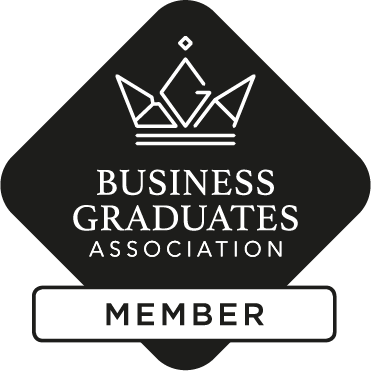University certificate
Scientific endorser

The world's largest faculty of pharmacy”
Introduction to the Program
TECH offers you a first class academic experience that will turn you into a specialist in Commercial Management focused on the Pharmaceutical industry"

In the Pharmaceutical Industry, Commercial Management and Marketing involve multiple departments, in charge of the exhaustive market research, the sales process or the planning of promotional campaigns through the different existing online and offline communication channels. In this way, the collection of all this information and its application will allow the sector to successfully launch innovative products that meet the needs of the market.
In this scenario, it is essential to have pharmaceutical professionals who, in addition to knowing the characteristics of the product itself, are aware of advances in other equally important areas for the implementation of effective sales and promotion projects. This Professional master’s degree in Commercial and Marketing Management in the Pharmaceutical Industry was created for this purpose.
It is a program that provides students with the most rigorous and exhaustive information on team coordination and the establishment of solid relationships with other health care professionals and suppliers. It will also delve into the development and management of marketing lines of action or the new technologies that are transforming the sector.
To achieve this goal, the excellent specialized faculty that teaches this program provides high quality content, complemented by multimedia resources, case study simulations and essential readings to further extend the program's syllabus.
The professionals have, before them, a unique opportunity to obtain a complete update from the hand of real experts and through a flexible teaching methodology. All they need is a digital device with an Internet connection to view, at any time of the day, the content hosted on the virtual platform. In this way, this academic institution gives pharmacists total freedom to reconcile their daily activities with their daily activities.
You will acquire knowledge about the structure and inner workings of the pharmaceutical industry, which will allow you to make strategic decisions”
This Professional master’s degree in Commercial and Marketing Management in the Pharmaceutical Industry contains the most complete and up-to-date scientific program on the market. The most important features include:
- The development of practical cases presented by experts in Pharmacy
- The graphic, schematic and eminently practical contents with which it is conceived gather scientific and practical information on those disciplines that are indispensable for professional practice
- Practical exercises where the self-assessment process can be carried out to improve learning
- Its special emphasis on innovative methodologies
- Theoretical lessons, questions to the expert, debate forums on controversial topics, and individual reflection work
- Content that is accessible from any fixed or portable device with an Internet connection
With this university program you will improve your commercial skills and fully master the exclusive sales process in the pharmaceutical sector"
The program’s teaching staff includes professionals from the field who contribute their work experience to this educational program, as well as renowned specialists from leading societies and prestigious universities.
The multimedia content, developed with the latest educational technology, will provide the professional with situated and contextual learning, i.e., a simulated environment that will provide immersive education programmed to learn in real situations.
This program is designed around Problem-Based Learning, whereby the professional must try to solve the different professional practice situations that arise during the course. For this purpose, students will be assisted by an innovative interactive video system created by renowned and experienced experts.
You will obtain the necessary skills to lead and manage teams efficiently in the pharmaceutical field through this 100% online program"

Acquire the necessary skills to conduct market research and discover business opportunities within the industry"
Why study at TECH?
TECH is the world’s largest online university. With an impressive catalog of more than 14,000 university programs available in 11 languages, it is positioned as a leader in employability, with a 99% job placement rate. In addition, it relies on an enormous faculty of more than 6,000 professors of the highest international renown.

Study at the world's largest online university and guarantee your professional success. The future starts at TECH”
The world’s best online university according to FORBES
The prestigious Forbes magazine, specialized in business and finance, has highlighted TECH as “the world's best online university” This is what they have recently stated in an article in their digital edition in which they echo the success story of this institution, “thanks to the academic offer it provides, the selection of its teaching staff, and an innovative learning method aimed at educating the professionals of the future”
A revolutionary study method, a cutting-edge faculty and a practical focus: the key to TECH's success.
The most complete study plans on the university scene
TECH offers the most complete study plans on the university scene, with syllabuses that cover fundamental concepts and, at the same time, the main scientific advances in their specific scientific areas. In addition, these programs are continuously being updated to guarantee students the academic vanguard and the most in-demand professional skills. In this way, the university's qualifications provide its graduates with a significant advantage to propel their careers to success.
TECH offers the most comprehensive and intensive study plans on the current university scene.
A world-class teaching staff
TECH's teaching staff is made up of more than 6,000 professors with the highest international recognition. Professors, researchers and top executives of multinational companies, including Isaiah Covington, performance coach of the Boston Celtics; Magda Romanska, principal investigator at Harvard MetaLAB; Ignacio Wistumba, chairman of the department of translational molecular pathology at MD Anderson Cancer Center; and D.W. Pine, creative director of TIME magazine, among others.
Internationally renowned experts, specialized in different branches of Health, Technology, Communication and Business, form part of the TECH faculty.
A unique learning method
TECH is the first university to use Relearning in all its programs. It is the best online learning methodology, accredited with international teaching quality certifications, provided by prestigious educational agencies. In addition, this disruptive educational model is complemented with the “Case Method”, thereby setting up a unique online teaching strategy. Innovative teaching resources are also implemented, including detailed videos, infographics and interactive summaries.
TECH combines Relearning and the Case Method in all its university programs to guarantee excellent theoretical and practical learning, studying whenever and wherever you want.
The world's largest online university
TECH is the world’s largest online university. We are the largest educational institution, with the best and widest online educational catalog, one hundred percent online and covering the vast majority of areas of knowledge. We offer a large selection of our own degrees and accredited online undergraduate and postgraduate degrees. In total, more than 14,000 university degrees, in eleven different languages, make us the largest educational largest in the world.
TECH has the world's most extensive catalog of academic and official programs, available in more than 11 languages.
Google Premier Partner
The American technology giant has awarded TECH the Google Google Premier Partner badge. This award, which is only available to 3% of the world's companies, highlights the efficient, flexible and tailored experience that this university provides to students. The recognition as a Google Premier Partner not only accredits the maximum rigor, performance and investment in TECH's digital infrastructures, but also places this university as one of the world's leading technology companies.
Google has positioned TECH in the top 3% of the world's most important technology companies by awarding it its Google Premier Partner badge.
The official online university of the NBA
TECH is the official online university of the NBA. Thanks to our agreement with the biggest league in basketball, we offer our students exclusive university programs, as well as a wide variety of educational resources focused on the business of the league and other areas of the sports industry. Each program is made up of a uniquely designed syllabus and features exceptional guest hosts: professionals with a distinguished sports background who will offer their expertise on the most relevant topics.
TECH has been selected by the NBA, the world's top basketball league, as its official online university.
The top-rated university by its students
Students have positioned TECH as the world's top-rated university on the main review websites, with a highest rating of 4.9 out of 5, obtained from more than 1,000 reviews. These results consolidate TECH as the benchmark university institution at an international level, reflecting the excellence and positive impact of its educational model.” reflecting the excellence and positive impact of its educational model.”
TECH is the world’s top-rated university by its students.
Leaders in employability
TECH has managed to become the leading university in employability. 99% of its students obtain jobs in the academic field they have studied, within one year of completing any of the university's programs. A similar number achieve immediate career enhancement. All this thanks to a study methodology that bases its effectiveness on the acquisition of practical skills, which are absolutely necessary for professional development.
99% of TECH graduates find a job within a year of completing their studies.
Professional Master’s Degree in Commercial and Marketing Management in the Pharmaceutical Industry
Do you want to stand out in the pharmaceutical industry and become a market leader? The Professional Master's Degree in Commercial and Marketing Management in the Pharmaceutical Industry from TECH Global University is the key to your success! Discover a virtual program that will provide you with all the tools you need to succeed in a highly competitive business environment. You will acquire top-notch strategic and analytical skills, enhancing your ability to make sound and effective decisions. Would you like to have a deep knowledge of the pharmaceutical industry and master the most innovative marketing techniques? At TECH, we have a team of highly qualified faculty with real-world experience in the field. You will learn from recognized experts who will guide you on your path to success. Would you like to receive direct guidance from professionals with successful track records in the pharmaceutical industry? Here you will find it!
You will find it!
This program offers you it all!!!
During the program, you will explore the fundamental aspects of business management and marketing in the pharmaceutical industry. From sales strategies to product management and market development, you'll gain knowledge that will enable you to excel in any role you wish to take on. The opportunity to study at TECH is simply amazing. Not only will you have access to a world-class academic program, but you'll also be part of a global community of professionals and industry experts. Would you like to make valuable connections and expand your international network? Upon completion of the program, you will receive a prestigious certificate that will support your skills and knowledge in business management and marketing in the pharmaceutical industry. This will open doors to a wide range of career opportunities in leading pharmaceutical companies, specialized marketing agencies and strategic consultancies. Are you ready to take your career to the next level? Enroll in the Professional Master's Degree in Commercial and Marketing Management in the Pharmaceutical Industry at TECH Global University of Technology and unleash your potential! Expand your professional horizons and become a reference in the exciting world of the pharmaceutical industry. The future is in your hands!







